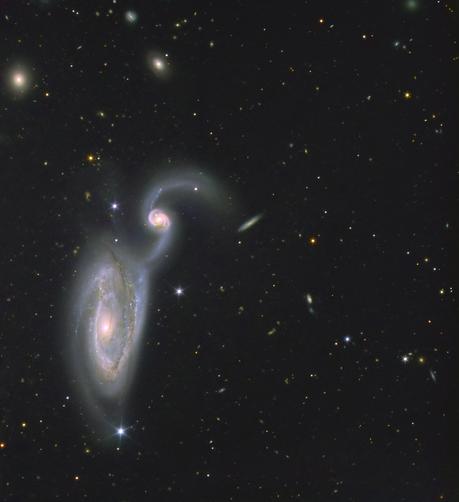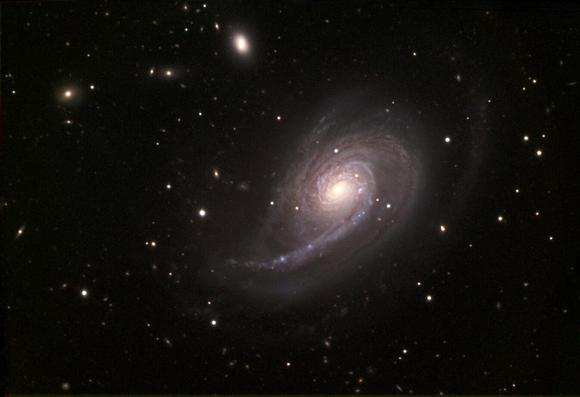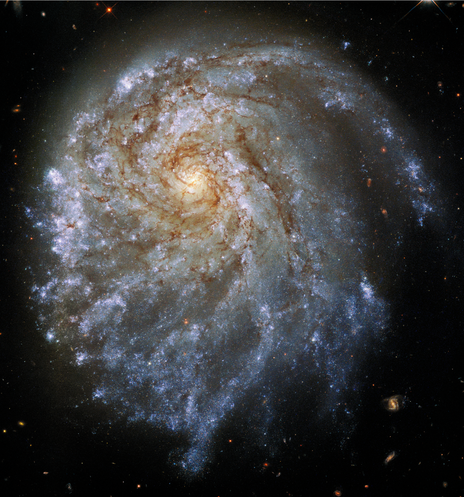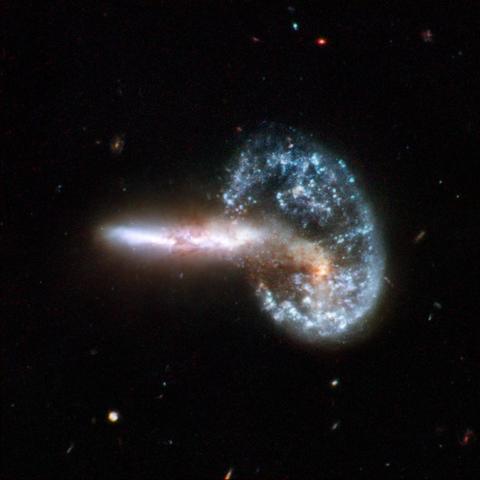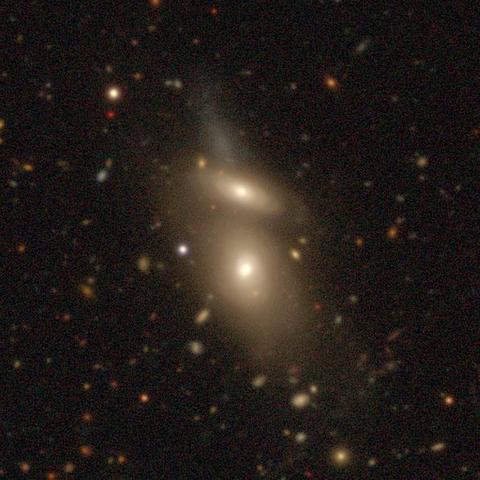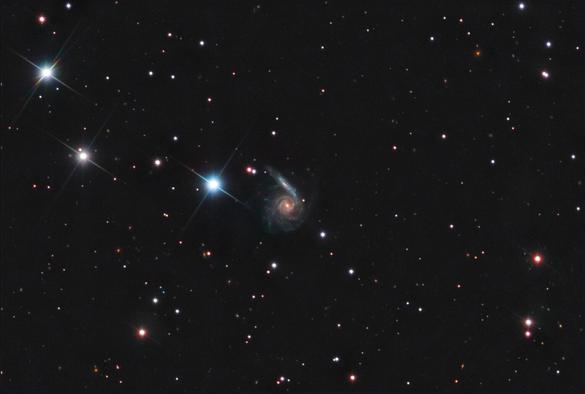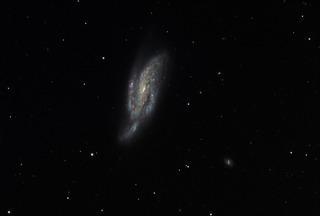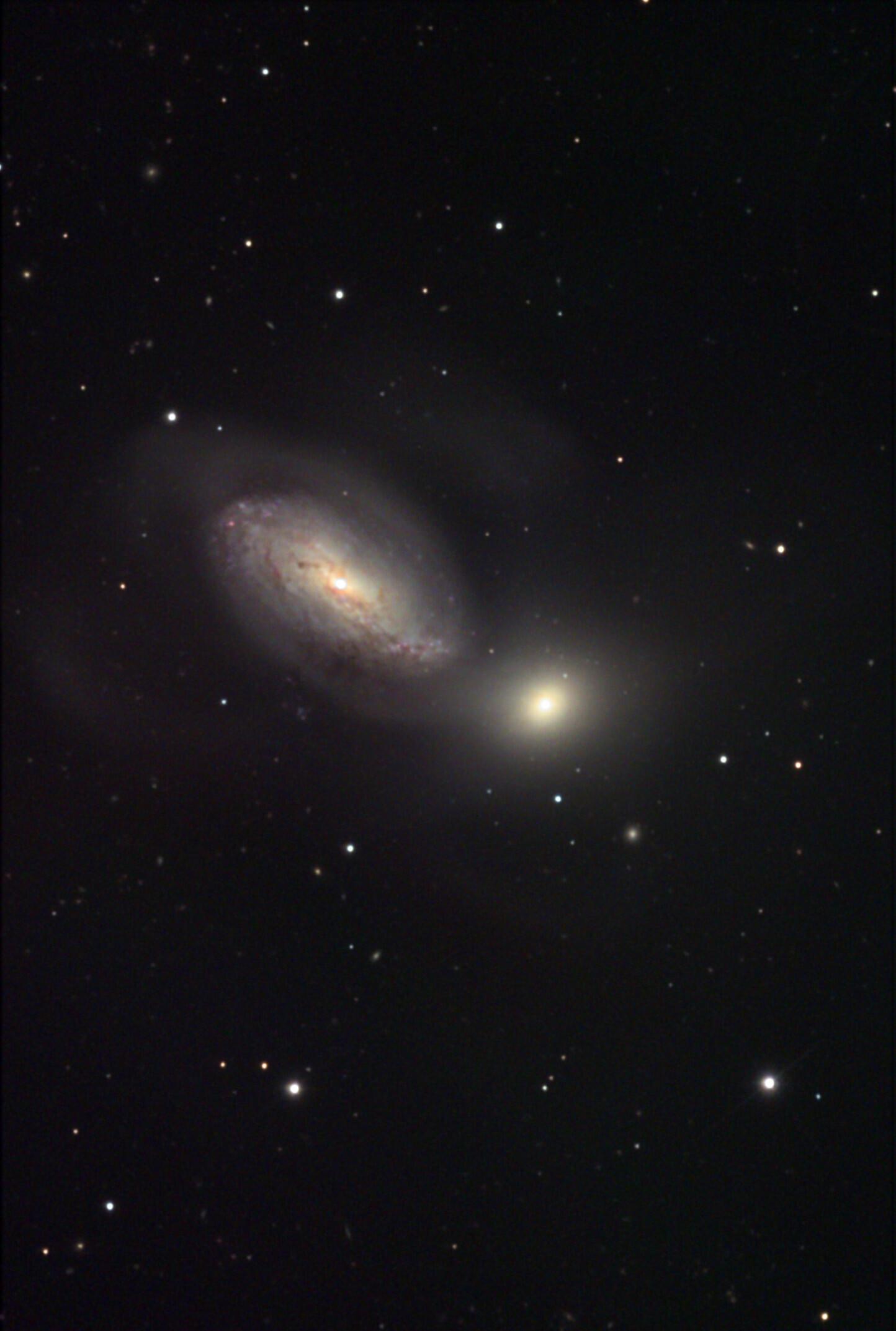Gran Telescopio Canarias image of Arp 84, also known as NGC 5394 and NGC 5395.
This interacting pair is sometimes called the "Heron Galaxy". The larger spiral, NGC 5395 forms the body and wing of the heron and the smaller, two-armed NGC 5394 forms the neck, head, and beak of the bird.
Credit: GTC, IAC
Source: https://www.gtc.iac.es/multimedia/imageGallery.php
